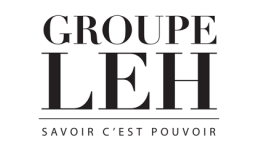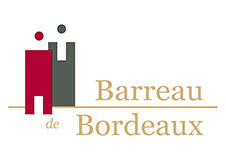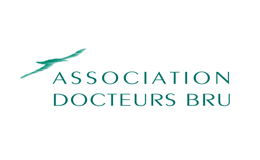Le renouveau de la maternité
Julie Térel.

- Thèse Droit, dactyl., Bordeaux, 2016, 768 p.
- Soutenue le 9 décembre 2016
- Jury : Françoise Dekeuwer-Défossez, université Lille 2 droit et santé, rapporteure ; Adeline Gouttenoire, directrice de recherche ; Jean Hauser, université de Bordeaux ; Jean-Jacques Lemouland, université de Pau et des pays de l'Adour ; Pierre Murat, université Grenoble Alpes, rapporteur ; Jean-Louis Renchon, université catholique de Louvain (Belgique)
Résumé / Abstract
Les évolutions sociétales - émancipation de la femme, maîtrise de la fécondité, acceptation de l’homosexualité, multiplication des formes de conjugalité, nouveaux modèles familiaux, médicalisation de la procréation - ont bouleversé le rapport entre maternité de fait et maternité juridique.
La femme qui revendique le statut de mère n’est plus nécessairement celle qui a porté et mis au monde l’enfant. Les techniques d’assistance médicale à la procréation ont ouvert le champ des possibles en permettant à la femme de réaliser son désir d’enfant, indépendamment des contraintes temporelles ou biologiques. Pourtant, la mère gestationnelle apparaît, aujourd’hui encore, comme la figure certaine de la maternité. Elle a vu ses droits accrus par un mouvement d’harmonisation du droit de la filiation, jusqu’à devenir l’égale de l’homme. Elle a cessé d’être identifiée par son statut conjugal, et est désormais définie par référence au fait biologique maternel de l’accouchement. L’enfantement marque alors la singularité de la maternité en tant que figure de rattachement, car elle est le seul vecteur d’identification spatio-temporelle de l’enfant. Un ordre public fort en la matière est donc de rigueur : l’accouchement, qui détermine l’état civil de l’enfant, ne devrait pas pouvoir être dissimulé. En revanche, la fonction maternelle de parenté devrait davantage être soumise à la volonté de la femme qui se revendique mère. La mère gestationnelle, qui devrait toujours pouvoir établir un lien de filiation, devrait également pouvoir refuser l’établissement d’un tel lien, au profit d’une autre figure maternelle plus incertaine car reposant sur la volonté d’être mère, volonté éventuellement corroborée par un lien génétique. Autrement dit, la filiation maternelle de l’enfant devrait pouvoir être transférée afin d’être en concordance avec la réalité sociologique.
La multiplication des figures de la maternité conduit ainsi à une rénovation de la conception traditionnelle de la maternité, par un rééquilibrage du rôle joué par les éléments objectifs et subjectifs.
A number of developments in society - the emancipation of women, birth control, the acceptance of homosexuality, the diversification of couple arrangements, new family models, the increasingly medical approach to procreation - have shaken up the link between motherhood in fact and motherhood in law.
The woman claiming the title of mother is no longer necessarily the one who bore the child and brought it into the world. Assisted reproductive technology has opened up possibilities by allowing women who want a child to have one, regardless of restrictions related to time or biology. However, the “gestation mother” remains to this day the definite mother figure. Her rights have increased through the harmonisation of the laws of filiation, eventually making her the man’s equal. She is no longer identified by her marital status and is now defined in relation to the biological process of giving birth. Giving birth hence highlights the specificity of motherhood as an attachment figure, being the only means of identification in space and time for the child. A strong public policy is therefore required in this area: giving birth should not be concealable, since it determines the child’s status in law. On the other hand, the maternal parenting role should depend more on the will of the woman who claims the title of mother. The gestation mother, who should always be able to ascertain the filiation, should also be able to refuse such filiation, in favour of another mother figure not as firmly ascertained, since her status is dependent on the will to be the mother, a will possibly corroborated by filiation. The child’s maternal filiation should be transferrable in order to reflect the social reality.
The multiplication of mother figures has thus led to an overhaul of the traditional conception of motherhood, by rebalancing the role played by objective and subjective elements.
Mots-clefs / Keywords
Mère, Maternité, Filiation, Parenté, Famille, Naissance, Gestation, Accouchement, Procréation, Assistance médicale à la procréation, Tiers donneur, Gamètes, Anonymat, Maternité pour le compte d’autrui, Enfant, État civil, Autorité parentale, Aliments, Succession, Égalité, Volonté, Contrat, Droit comparé
Mother, Maternity, Motherhood, Filiation, Parenthood, Family, Birth, Gestation, Giving birth, Procreation, Medically assisted procreation, Third party reproduction, Gametes, Anonymity, Surrogate motherhood, Child, Civil status, Parental responsibility, Alimony, Probate, Equality, Will, Contract, Comparative law
Contact
Julie Térel
Université de Bordeaux - CERFAPS - 16 avenue Léon Duguit - CS 50057
F 33608 Pessac cedex
+33 (0)5 56 84 54 90
Contacter par courriel
Pour aller plus loin
Consulter la thèse






